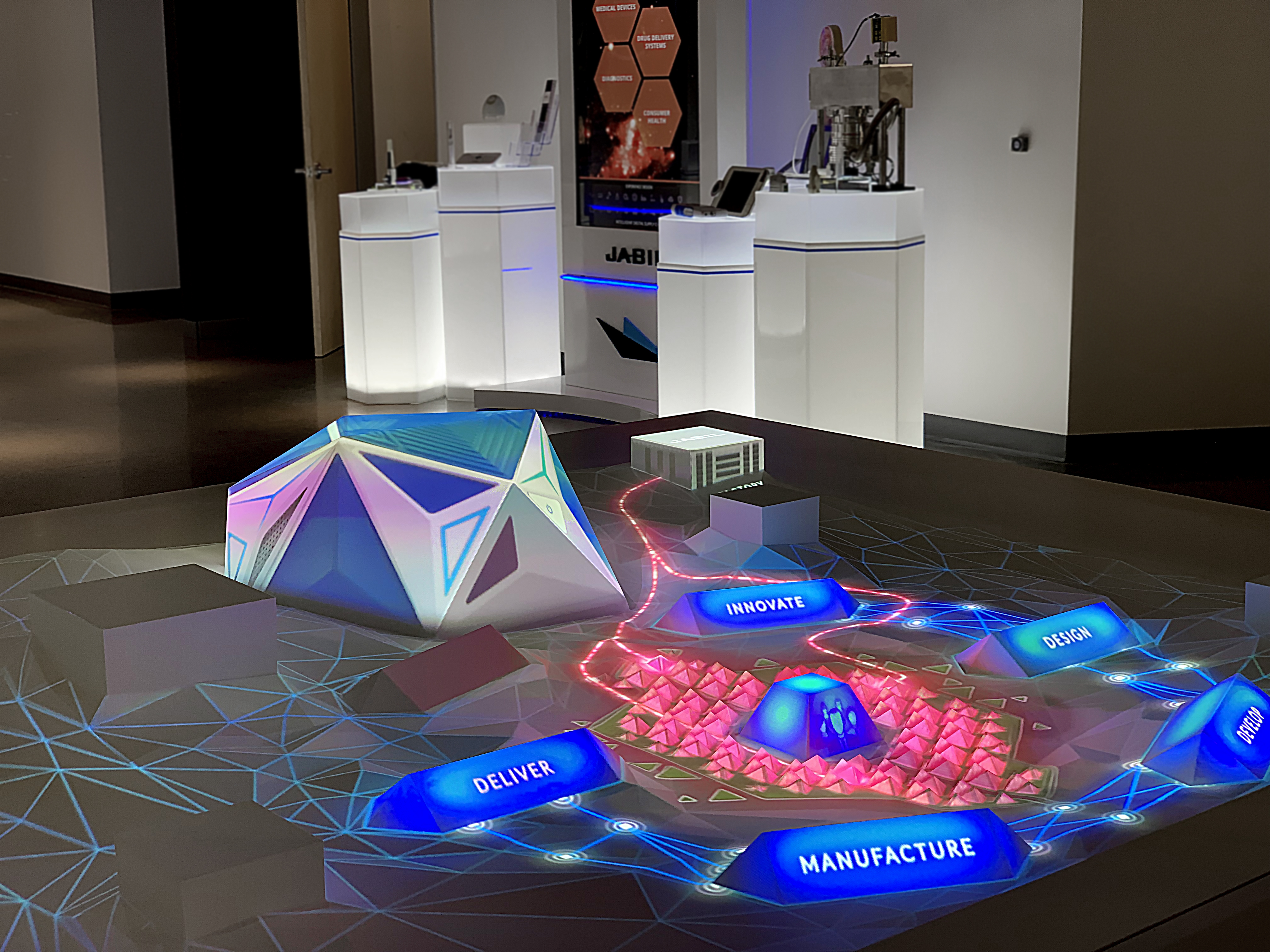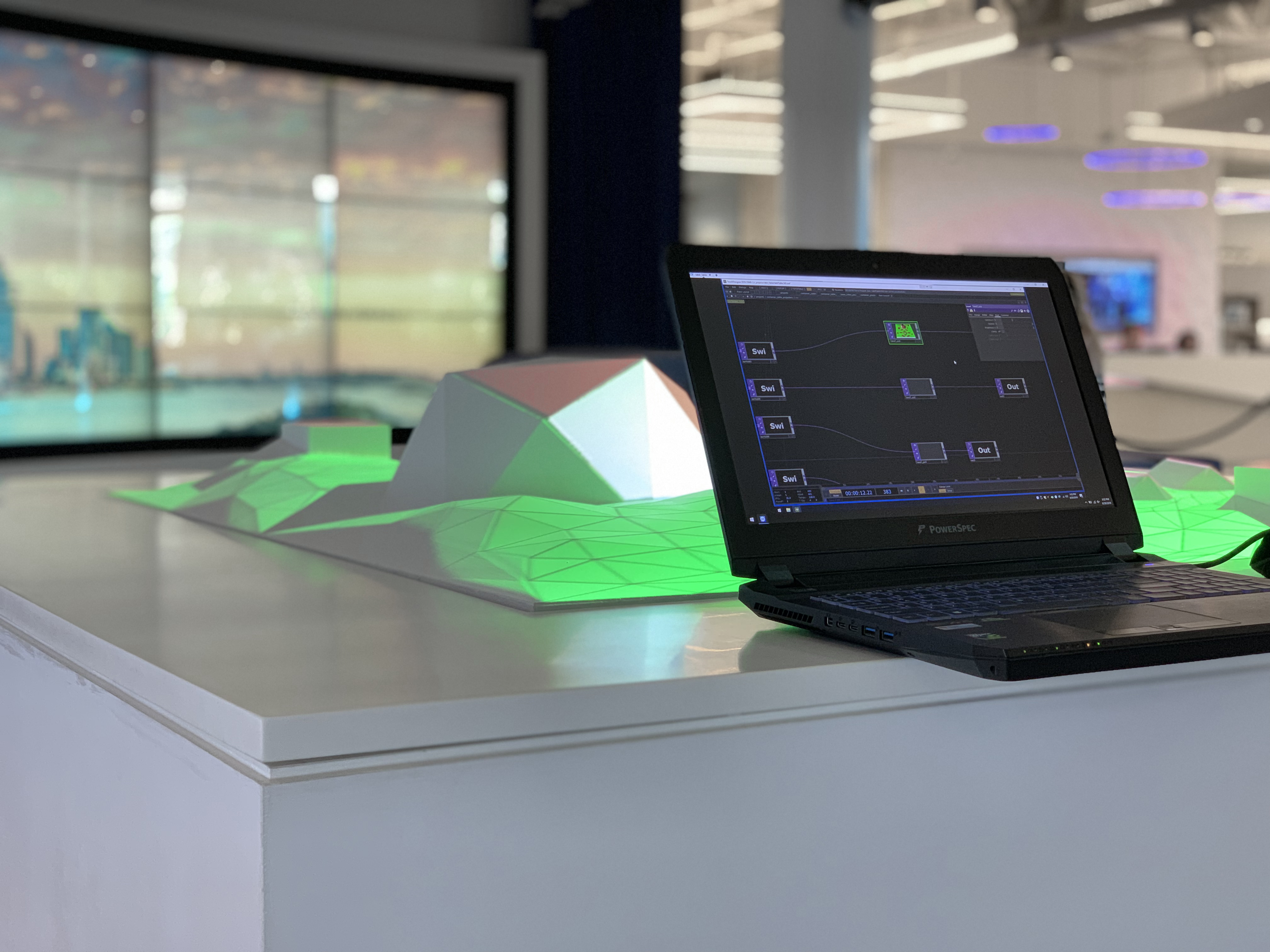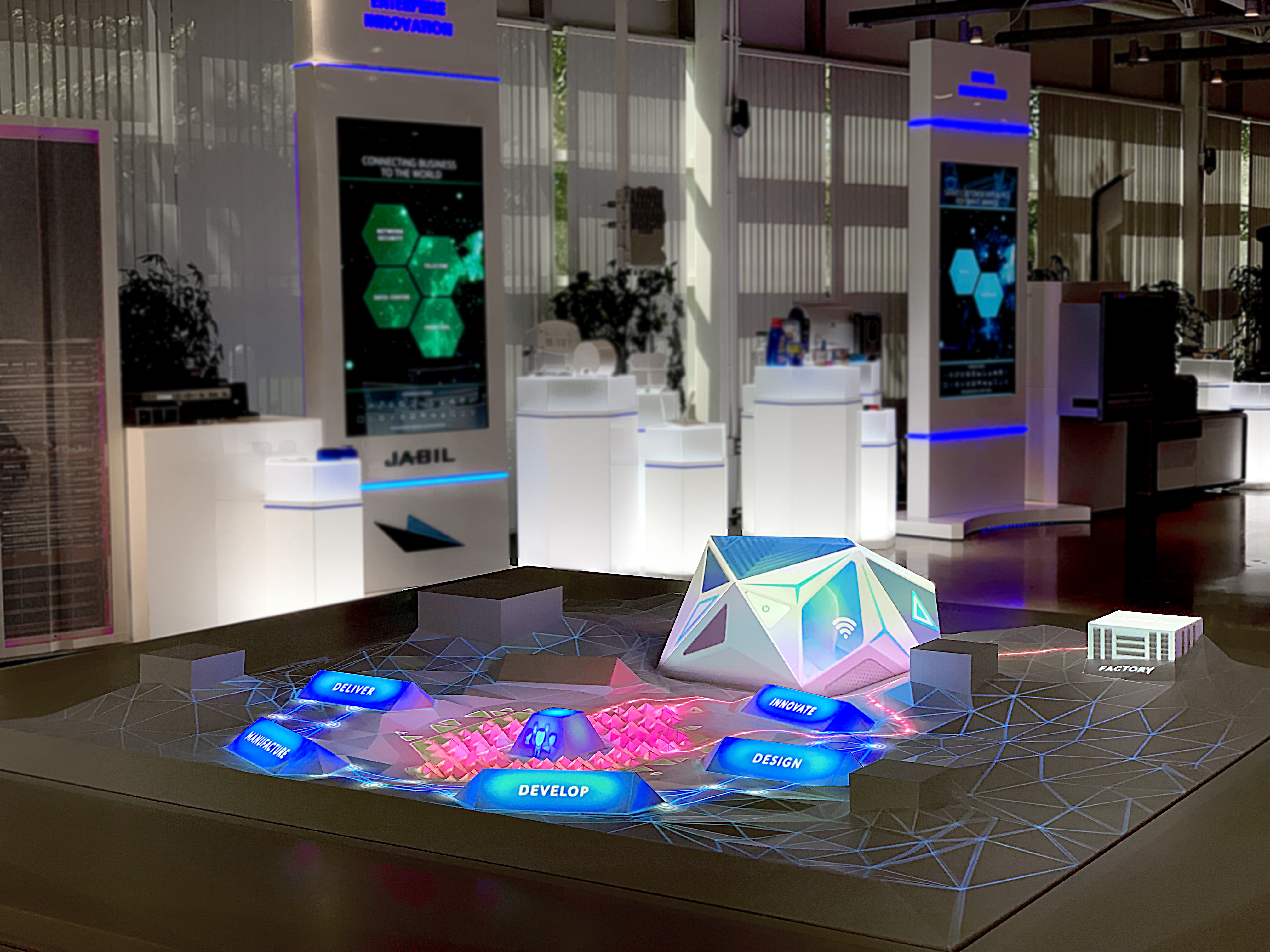How do you create an informational display that allows room for viewers to imagine limitless possibilities? That was the challenge presented by the worldwide manufacturing services company Jabil when it approached creative agency Leviathan to develop a projection-mapped installation in its Blue Sky Innovation Center in San Jose, CA.
[The Technology Manager's Guide to Projectors and Screens]
Having a prior relationship certainly helped as a base for understanding. Leviathan had worked with Jabil on another projection mapping project in 2015, one that was focused on a single aspect of Jabil’s offerings. The goal of the new project was much wider in scope: To help a wide range of customers envision the ways Jabil’s expertise throughout its entire digital manufacturing process might specifically address their needs.
“The 2015 exhibit had been one of the most successful to date, and since our working relationship with the organization had continued to grow since then, we were pleased that they returned to us for the next iteration of immersive storytelling,” said Chad Hutson, CEO of Leviathan. “This time, though, the narrative went far beyond just healthcare and instead needed to tackle the lifecycle of contract manufacturing, for which Jabil is an industry leader.”
Watch the video below to learn more about the projection mapping project.
Leviathan creative director Pedro Andres Sanchez and his team first examined what Jabil offers as part of the manufacturing lifecycle, which includes everything from researching the idea of a product through to its creation and delivery. In addition to healthcare, the company serves industries including consumer appliances, food and beverage packaging, and electromechanical aerospace systems.
“Given the different visitors who might come to hear about Jabil, it made sense to develop something abstract and flexible,” Sanchez said. “We wanted to create an exhibit that would capture the attention of visitors, and serve as a visual aid that would help a docent speak about their services in a way that’s tailored specifically for that client, using the interactive content as a visual support system.”
The abstract concept took shape in Maxon Cinema 4D and Adobe After Effects. Leviathan then worked with Columbian Model & Exhibit Works on the fabrication of a foam-milled and 3D-printed sculptural element. Whitlock (now AVI-SPL, who is number one on the 2020 SCN Top 50 list) provided AV integration on the project, installing four Christie DHD630-GS projectors, driven by a Dell PC that includes an Nvidia Quadro P5000 graphics card. The projection table is powered by a custom software solution built using TouchDesigner.

“Christie 1DLP laser projectors are designed for performance and reliability in high-usage environments,” said Bryan Boehme, executive director of Americas enterprise sales and global business development, Christie. “We’re thrilled that AVI-SPL selected Christie GS Series projectors to help visualize Jabil’s expertise in this exciting projection mapping installation.”
“This software includes a custom video playback system, remote controls to allow a docent full control of the experience from anywhere in the room, and a system for calibrating the four projectors as quickly and easily as possible,” Sanchez added. “Using TouchDesigner as the foundation was critical in allowing us to craft a solution specific to the needs of Jabil.”
The piece is one of the last things a visitor may see on a tour, so it serves as a summation of all they’ve seen throughout Jabil’s space. A docent can walk them through the presentation, and the interactive design allows the docent to customize the story, focusing on aspects that are more important to the client to or help answer their questions, while skipping elements that are less important or don’t apply to them.
“The interactive run-of-show gives the docent the ability to expand or decrease the duration of each story beat or skip a section entirely using a controller, allowing them to customize each presentation to the client’s needs,” Sanchez explained. “The design also gives the docents the ability to construct various narratives to match a specific client while illustrating the concepts and ideas behind Jabil’s digital manufacturing.”

The conceptual abstraction develops as the story progresses, going from a nebulous, sketched idea to something that resembles an amorphous physical product, with a 3D structure at the center that represents the product. The projection incorporates the visual language of various products, with hints of different materials and colors, suggesting but never specifying a distinct object.
“The abstract design approach invites the visitors to imagine their unique product or service at the center of the story,” Sanchez said.
Having a docent interact with the installation became part of the plan in the initial stages. Some of that came from the client’s side, as Jabil noted that it was likely visitors would be accompanied in the space where the installation would be. Plus, they learned a bit about the company’s needs following the earlier projection mapping installation that focused on healthcare.
“That one was designed to be a bit more interactive, and we expected people to interact with it,” Sanchez said. “It made more sense in this situation for the docents to be the ones who would guide people and decide how much time to spend on different elements.”
With docents present to narrate and explain, the project did not require audio elements. Having a guide also means customers have little direct interaction with the technology, which reduces the number of possible points of friction for the visitor and minimizes maintenance tasks. Projection calibration and table clearing and resurfacing are the only anticipated upkeep needs for this particular project.
One of the biggest differences between this project and some of Leviathan’s earlier work, CEO Hutson explained, are the technology developments that have played a big role in improving workflows.
“When Leviathan first came onto the scene in 2010, projection mapping was one of our primary tools of the content creation trade, though alignment was still very much a manual process,” he said. “Both hardware and software have come a long way to automatic such tasks, so even though good storytelling is always core to our clients’ work, we also look forward to utilizing these updated technologies for projection well into the future.”
Storytelling definitely remains the most important part. For the recent Jabil project, it turns out the abstract storytelling elements proved useful even before the installation was completed, Sanchez explained. “As Jabil’s marketing strategy shifted before we finished the project, the design allowed us to pivot without rethinking the concept or physical structure, validating the versatility to support significant content updates in the future,” he concluded.
